Key takeaways:
- Reparations politics requires acknowledgment of historical injustices, emphasizing social implications beyond mere financial compensation.
- Youth engagement is essential in the reparations movement, bringing fresh perspectives and fostering empathy through shared lived experiences.
- Building networks for activism enhances collaboration and mentorship, empowering young activists to mobilize effectively.
- Authentic storytelling and safe spaces for dialogue are vital for inspiring leadership and fostering trust among youth activists.

Understanding reparations politics
Reparations politics involves a commitment to address the historical injustices faced by marginalized communities, particularly those stemming from slavery and systemic racism. I vividly remember my first encounter with the concept; it felt like a light bulb moment, connecting the dots between past oppression and present inequalities. This connection made me wonder: how can we acknowledge the pain of the past while fostering healing in the present?
At its core, the discussion around reparations goes beyond financial compensation; it encompasses acknowledgment, education, and systemic change. I often think about conversations I’ve had with friends who didn’t fully grasp the urgency of reparations. These discussions made me realize that many see reparations merely as a monetary issue, missing the profound social implications tied to dignity and justice.
Understanding reparations politics means delving into complex narratives that touch on identity, history, and the ongoing impacts of colonialism and exploitation. Reflecting on my journey, I’ve seen the power of diverse voices in reshaping these narratives, sparking emotions that compel action. Isn’t it amazing how storytelling can unite us in seeking justice for those who have been wronged?

Importance of youth engagement
The engagement of youth in reparations politics is not just important; it is essential. I recall the passion in the eyes of young activists I met at a local rally. Their enthusiasm was infectious, sparking discussions that brought new perspectives on age-old issues. This reminded me how the energy of youth can challenge complacency and invigorate movements that have stalled.
When young people take center stage, they bring a unique lens to historical injustices. I often think about a workshop where a teenager’s poignant story about their family’s history shed light on the emotional impact of systemic racism. This moment underscored for me that youth engagement isn’t just about participation; it’s about sharing lived experiences that foster empathy and understanding, bridging generational gaps.
Furthermore, involving youth ensures that the movement stays relevant to future generations. I’ve seen firsthand how their innovative ideas and use of technology can amplify messages and mobilize communities. With a fresh approach, these young activists not only reaffirm the importance of reparations but also inspire others, creating a ripple effect that can lead to substantial change. Isn’t it exciting to imagine the future we can build when we empower our youth today?
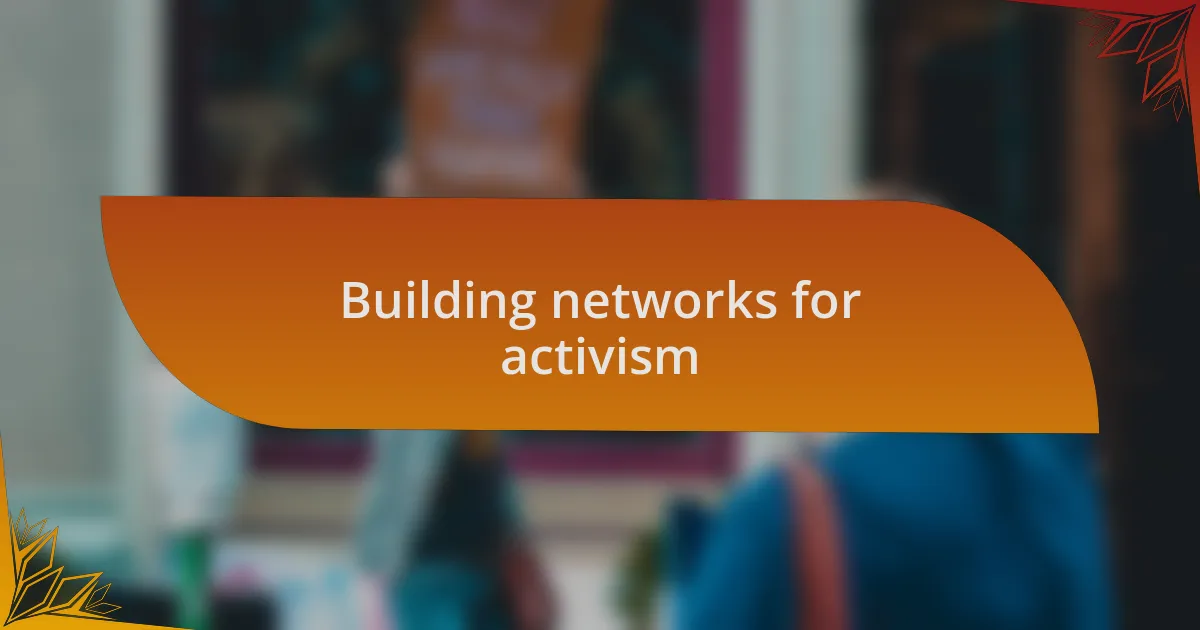
Building networks for activism
Building networks for activism is a crucial step toward amplifying youth voices in the reparations movement. I remember attending a community organizing meeting where young activists shared their contact information, forging connections that would last beyond the event. This informal network fostered collaboration, enabling them to mobilize resources effectively for future campaigns.
As I engage with youth activists, I often reflect on the power of mentorship within these networks. During a recent panel discussion, a seasoned activist paired with a group of young leaders, offering guidance and wisdom. This interaction was enlightening; it illustrated how experienced voices can help shape and strengthen emerging ideas, nurturing confidence in the next generation of advocates.
The digital age has transformed how we build these networks. I’ve observed how social media platforms can become lifelines for young activists, allowing them to connect across vast distances. Seeing them harness these tools to organize events or share their stories makes me think: How many more barriers can we break down when we encourage our youth to engage with technology creatively? It’s a game-changer in crafting a united front for change.
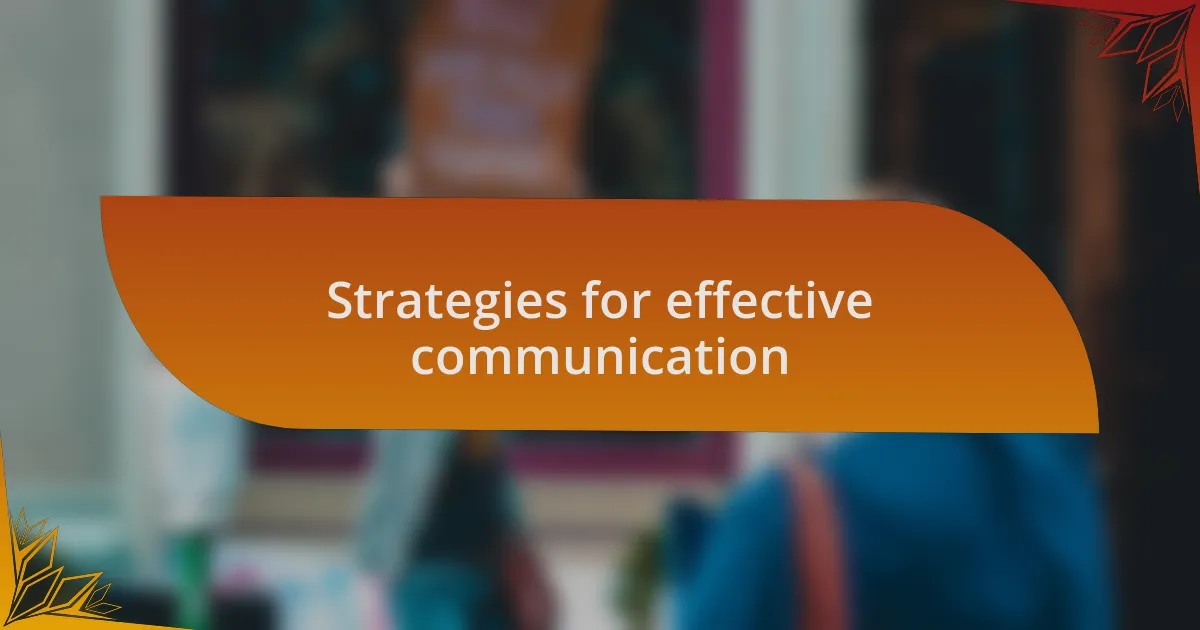
Strategies for effective communication
Effective communication is key when engaging youth activists. I once facilitated a workshop where we focused on the art of storytelling. Witnessing young participants share personal narratives was powerful; their lived experiences became the foundation for deeper discussions. How often do we underestimate the impact of sharing our stories in building connections? These moments reminded me how stories can bridge generational gaps and ignite passion in others.
I’ve found that creating a safe space for dialogue is equally important. In one instance, during a community forum, I encouraged attendees to express their thoughts without fear of judgment. The energy in the room shifted as people opened up, revealing concerns and aspirations. This supportive environment allowed youth to voice their thoughts confidently, fostering a sense of ownership in the reparations discourse. Isn’t it incredible how a little vulnerability can lead to breakthroughs in understanding?
Additionally, using diverse communication methods can enhance engagement. I remember when I introduced visual aids, like infographics and videos, in a meeting with young activists. Their eyes lit up as the information became more accessible and engaging. Incorporating various styles of communication not only keeps the conversation lively but also ensures that diverse learning preferences are met. How can we continue to adapt our communication strategies to resonate with the ever-evolving landscape of activism? This adaptability is essential for fostering ongoing involvement and enthusiasm among young advocates.
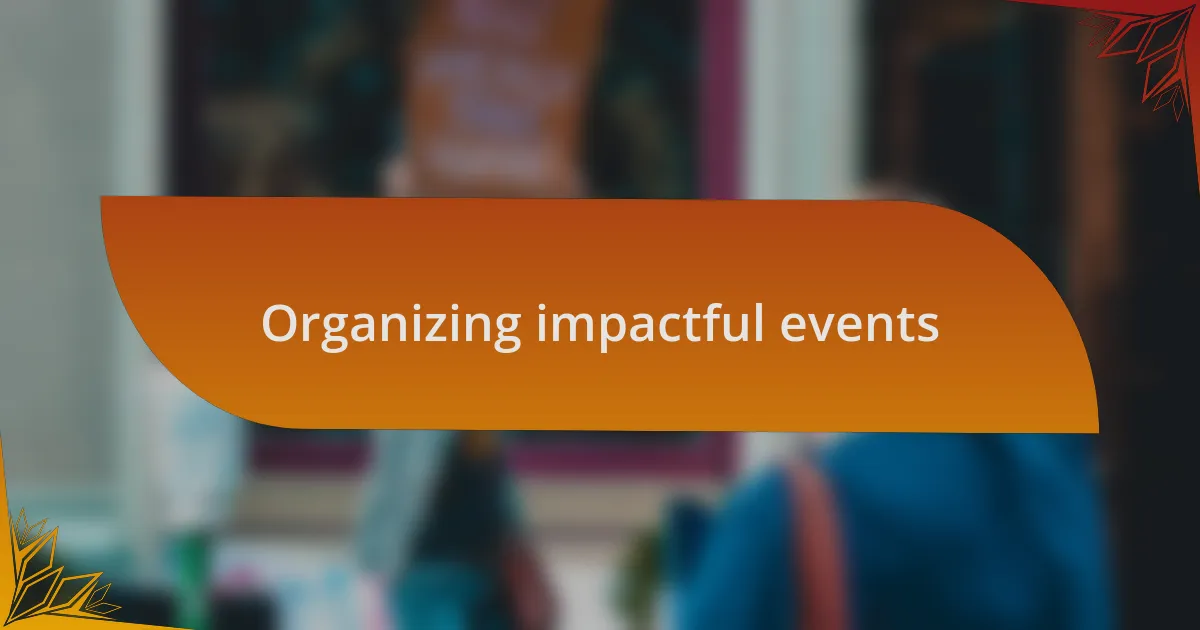
Organizing impactful events
Organizing impactful events requires careful consideration of the themes that resonate with youth activists. The last time I coordinated a community rally, I chose the theme of “Justice through Unity.” This reflective approach not only aligned with the cause but also sparked a remarkable turnout. I still remember the moment when a young activist shared her vision for a united front, inspiring everyone present to envision their role in a broader movement. How often do we cultivate themes that ignite that kind of collective spirit?
Logistical details can make or break an event. In one instance, I decided to hold a workshop in a local park rather than a sterile conference room. The natural setting brought a sense of freedom and openness that fostered creativity and connection. It was fascinating to see how the relaxed atmosphere led participants to engage more deeply and share ideas more openly. Have you ever noticed how the environment can shift the entire vibe of a gathering?
Lastly, collaboration with local organizations can enhance the reach and impact of events. I’ve partnered with an arts collective in the past to integrate creative expression into our discussions on reparations. The fusion of art and activism created a vibrant space where participants felt not just heard, but seen. Isn’t it inspiring how a shared vision among different groups can amplify our message, making the movement even more compelling?
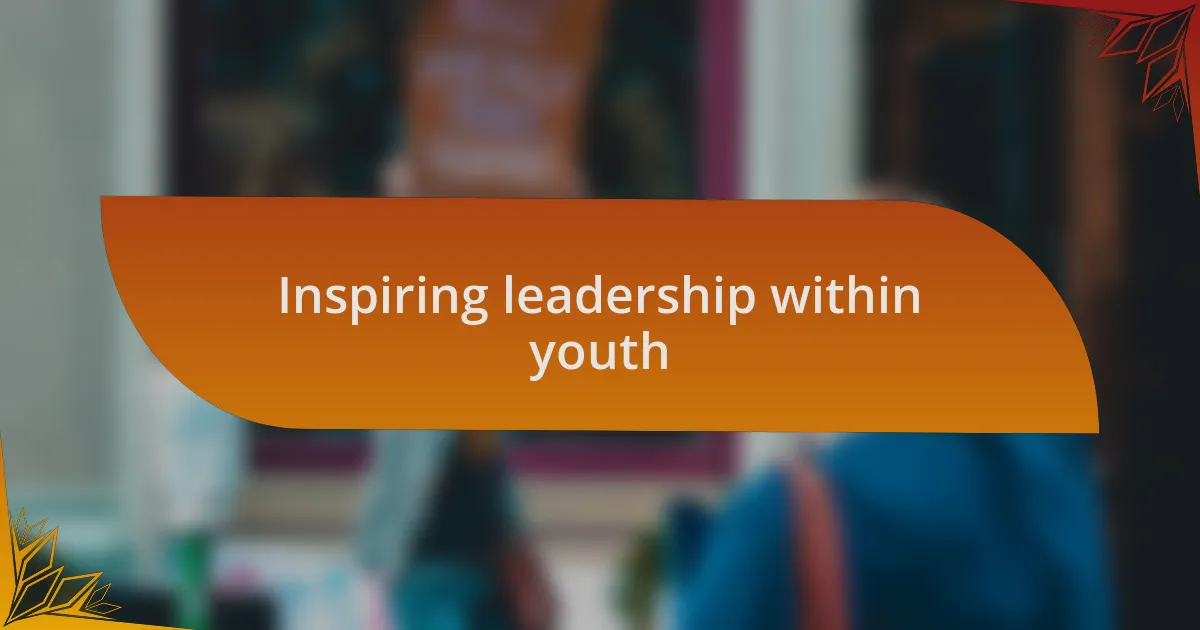
Inspiring leadership within youth
In fostering inspiring leadership among youth, I’ve often turned to mentorship as a powerful tool. There’s something transformative about guiding a young leader through their developmental journey. I recall mentoring a teenager who initially struggled with self-doubt; through our discussions, I encouraged her to embrace her unique voice. Watching her gain confidence and eventually lead a community discussion was a moment of pure joy for me. Have you ever witnessed someone blossom when given the right support?
Engagement often hinges on authentic connections, which is why I prioritize open dialogues. During a recent meeting, I asked young activists to share not only their dreams for the future but also their fears. It was eye-opening to see how vulnerability fostered trust among the group, leading to a deeper understanding of shared challenges. Isn’t it remarkable how being genuine can create an environment where leadership naturally flourishes?
Inspired leadership requires more than just words; it necessitates action. I once organized a youth-led clean-up initiative in our neighborhood. What stood out was seeing the participants mentor younger siblings and friends, showcasing leadership in real-time. The energy was infectious, and as I watched them take charge, I thought, how often do we provide opportunities for youth to lead simple yet impactful initiatives that build their confidence?
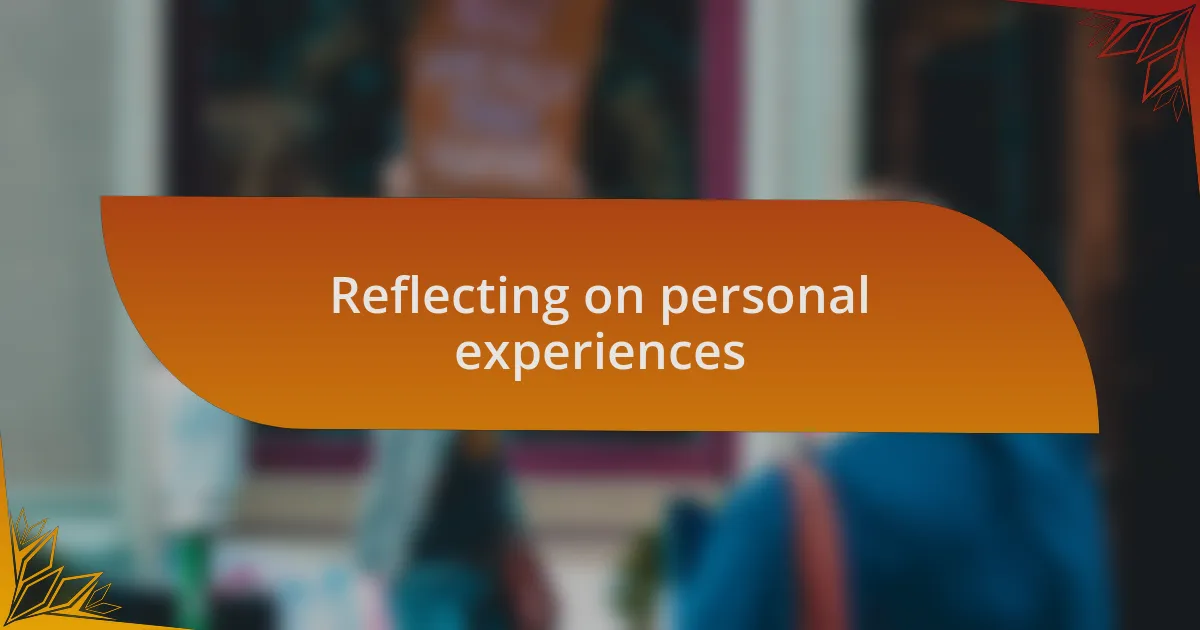
Reflecting on personal experiences
Reflecting on my own experiences, I find that those moments of collaboration with young activists often reveal the profound impact of shared stories. I vividly remember a discussion where a young man bravely shared his family’s history with systemic injustice. His revelation brought an undeniable energy into the room, as others began to share their own truths. Have you ever felt the shift in a group when authenticity takes center stage? That night was a reminder of how connection through personal narratives can ignite collective action.
In my journey of engaging youth, I’ve learned that every interaction holds the potential for growth. I once participated in a workshop where we shared our failures as activists. It felt liberating to discuss my own missteps and listen to others recount their hurdles. This candid exchange fostered a supportive space, allowing us to turn our lessons into stepping stones rather than stumbling blocks. How often do we create environments where vulnerability can lead to resilience?
One particular experience that stays etched in my memory is when I accompanied a group of young activists to a city council meeting. Their nervous energy was palpable as they prepared to voice their concerns. I still recall the pride swelling within me as one brave individual stood up to speak. Her voice trembled at first, but with each word, she grew stronger. Seeing her transform from tentative to empowered reaffirmed my belief in the importance of fostering such engagement. Isn’t it incredible how those moments can define not just individual journeys, but also the future of our movements?